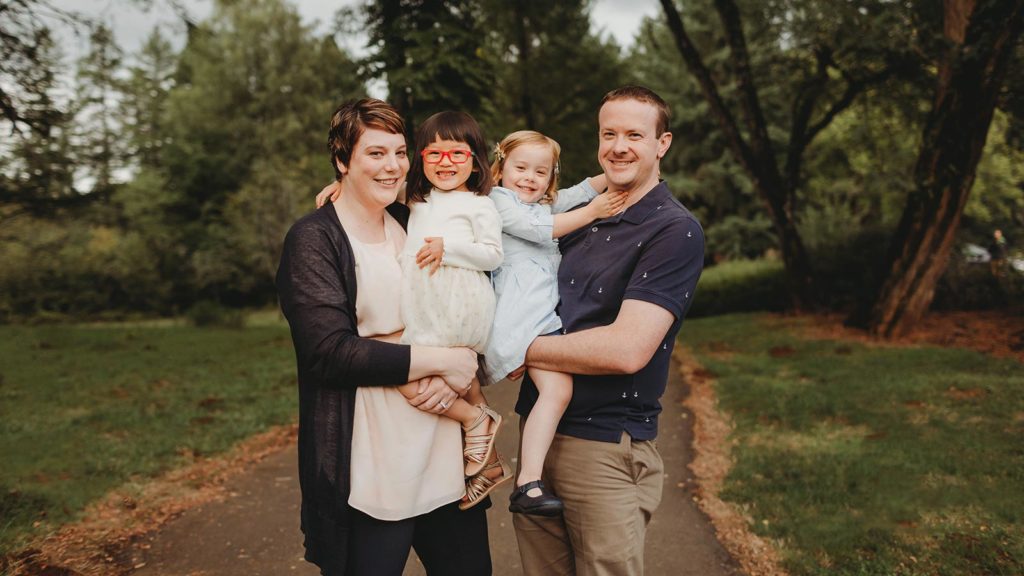
Celeste Snodgrass, Holt’s Director of Clinical Services, shares tips for bonding with your tweens and teens.
Parents of younger children (under the age of 6 or 7) have many opportunities throughout the day to help their child meet their needs. Children often need help with the bathroom, brushing their teeth, buttoning their pants, cutting their food, getting their hair washed, etc…
Each of these events offers parents opportunities throughout the day to build trust with their child — communicating to the child they are there for them and will assist them in their needs.
These small interactions are particularly important to newly adoptive parents and their children, and provide opportunities for physical touch during a time when relationship-building is of most importance. Every single interaction might not end in a bear hug, but parents are offering nurture. Even if children are not fans of hugs and kisses, these small nurturing touches create connection, through loving human contact. Children who have lacked intimacy or experienced unhealthy touch in the past are still hard-wired for connection — and you can help them get there through playful interaction.
What are parents to do when they adopt older children who are capable of completing all the activities of daily living independently? How can parents physically connect when their child refuses hugs and kisses?
Parents need to be creative and playful.
Playful? With my older child? Yes! Even teenagers love to play. They just play differently than toddlers and school-age children!
Find out how your child likes to play. Do they enjoy building with Legos? Then don’t just play Legos with them, get some boxes or cardboard and help them create a giant maze, fort or tunnels using the cardboard. Get on the ground with them, help them problem-solve how to fit the boxes together. You might get some eye rolls — because all pre-teens are skilled at the eye roll — but they will have fun! Does your child enjoy sports? Start off playing a non-contact sport with them (baseball, kicking the soccer ball) and then build up to one-on-one basketball, football, and when it’s cold outside, wrestle in the house.
Playful? With my older child? Yes! Even teenagers love to play. They just play differently than toddlers and school-age children!
Did you adopt a girl who refuses to play a sport and loves to dress up and take selfies? Then help her with her make-up and her hair. Don’t just show her how to put eyeshadow on. Do it for her. Play with make-up with her and create different looks on each other that are totally outrageous or subtle and pretty. Take silly selfies together with your new looks. You can do this with each other’s hair or nails as well. At-home spa days are wonderful ways to physically pamper your child and provide nurturing touch. Try an impromptu dance party or doing a few partner yoga poses together (a quick internet search will give you some ideas).
Even just going for a playful walk where you each give a fist bump when you see certain things — an animal, a type of flower, a specific car model, etc… — can offer an opportunity to align with your child, explore your fun side, and incorporate some level of physical or symbolic touch.
All kids, regardless of their age, appreciate a nightly bedtime routine. With younger children, we tend to help them get their pajamas on, brush their teeth, then read a story or two, tuck them in bed, give them a kiss and if we are as skilled as Mary Poppins, they fall right to sleep. But how do you create a nurturing bedtime routine with a pre-teen that refuses to go to bed or refuses that goodnight kiss?
This is where parents need to get creative and silly. Being silly can disarm a lot of fear, frustration or anger.
Is your child light enough that you can pick them up like a sack of potatoes? Can you jokingly drag them into their bedroom all while the other parent is tickling their feet or playing tug-of-war to try and keep them in the family room? Can you chase them with fingers that are ready to tickle them? If you keep the mood light and silly, most children will comply and begin laughing along the way. Instead of tucking in the moody pre-teen, can you jump on their bed until they begin laughing? Can you take their favorite blanket, stick it in the dryer for ten minutes to get it all nice and warm, then as they get in bed, wrap it around them with a little hug? Can you jokingly wrestle them until you get their cheek in the perfect position to plant a kiss?
Play isn’t just Barbies, dump trucks and Candyland. Physical play that involves loving, nurturing touch can help build strong connections with your child.
Celeste Snodgrass | LCSW-PIP, Director of Clinical Services
For more information about ways to build connections with children of all ages, read “Attaching Through Love”, “Hugs and Play” and “Games and Activities for Attaching With Your Child” by Deborah Gray or the TBRI for Teens video.

Holt provides support to all adoptive families!
We are here to serve, connect and support all adoptive families! We offer post-adoption coaching and education, summer camps and more.

